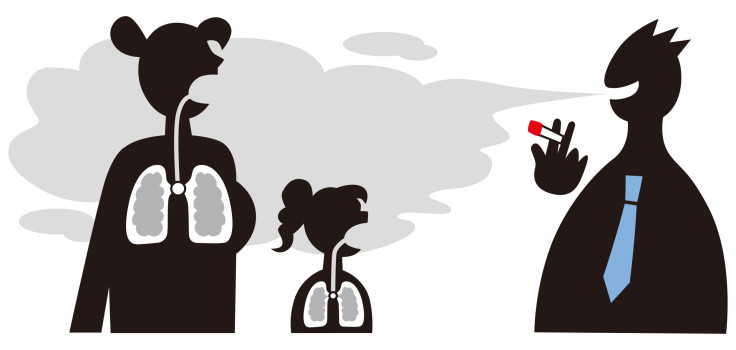Exposure To Secondhand Smoke As A Toddler May Lead To Excess Weight Later On In Childhood

Bad news for you smoking parents out there: It seems your ashtray habits may cast a longer shadow on your child’s health than previously believed.
According to a new Canadian study published in Nicotine and Tobacco Research, a toddler’s exposure to their parent’s secondhand smoke may predict a heftier weight and wider waist later on in childhood. Though the results are discouraging enough, they also point to the possibility that the harmful effects of cigarette smoke are just as pronounced during early childhood as they are during pregnancy.
Sifting through data from the Quebec Longitudinal Study of Child Development, the study authors looked at the reported behavioral habits of 2,055 families, particularly at levels of household smoke exposure when their child was between the ages of 1 and 7. They then attempted to ascertain any possible correlations between the level of smoking and measurements of the child’s waist circumstance and body mass index (BMI) at age 10. Higher amounts of both are known to predict a higher risk of developing metabolic disorders like diabetes later on in adulthood, as well as excess weight.
"By the age of 10, the children who had been intermittently or continuously exposed to smoke were likely to have waists that were up to three-fifths of an inch wider than their peers. And their BMI scores were likely to be between 0.48 and 0.81 points higher," stated lead author Dr. Linda Pagani, of the University of Montreal, in a press release. "This prospective association is almost as large as the influence of smoking while pregnant."
The researchers noted that only occasional smoking exposure was independently associated with excess weight, after controlling for factors like their parent’s mental health or income, with a 43 percent greater chance of a child becoming obese or overweight in such a household. But they also believe that their results are likely understating the connection. "We suspect the statistics we've established linking childhood obesity to exposure to parents' smoking may underestimate the effect due to parents underreporting the amount they smoked out of shame," Pagani said.
According to the Centers for Disease Control and Prevention, two out of every five children between the ages of 3 and 11 are exposed to secondhand smoke regularly. For black children, that number shoots up to seven out of every 10.
Though the study only clarified the existence of a link between smoking and childhood weight problems, Pagani feels there are several theories that could explain the relationship. "Early childhood exposure to secondhand smoke could be influencing endocrine imbalances and altering neurodevelopmental functioning at this critical period in hypothalamic development, thus damaging vital systems, which undergo important postnatal growth and development until middle childhood, i.e. the period that we've looked at in this study," she said. These effects on the body may be magnified due to the fact that children’s lungs need to take in more air with every breath compared to adults.
Pagani hopes their research highlights the need to further reduce smoking rates, especially among parents. "In any event, our findings emphasize the importance of public health initiatives and parental sensitization aimed at domestic exposure reductions during the critical early childhood years," she said.
Source: Pagani L, Nguyen A.K. Fitzpatrick C. Prospective associations between early long-term household tobacco smoke exposure and subsequent indicators of metabolic risk at age 10. Nicotine and Tobacco Research. 2015.



























